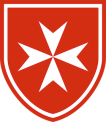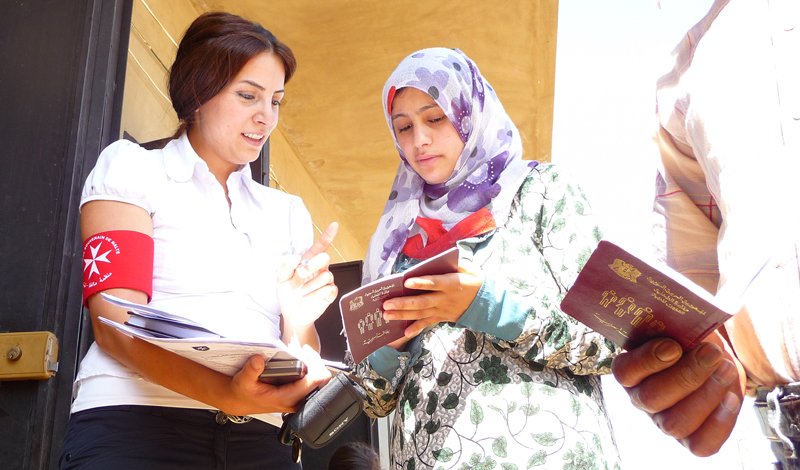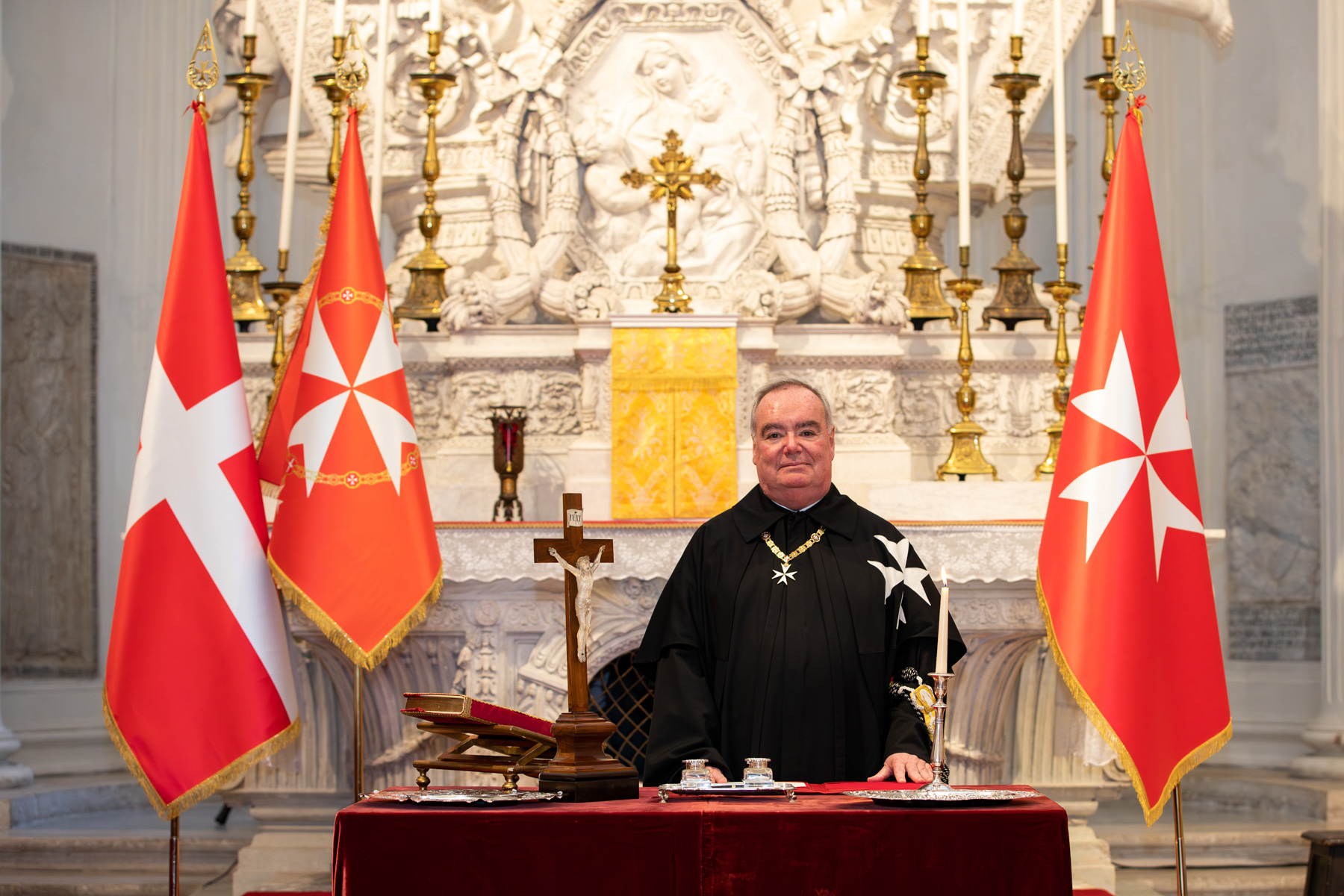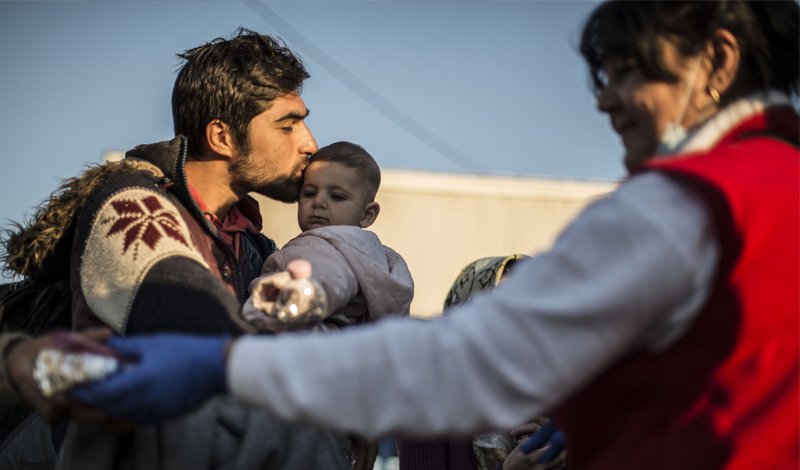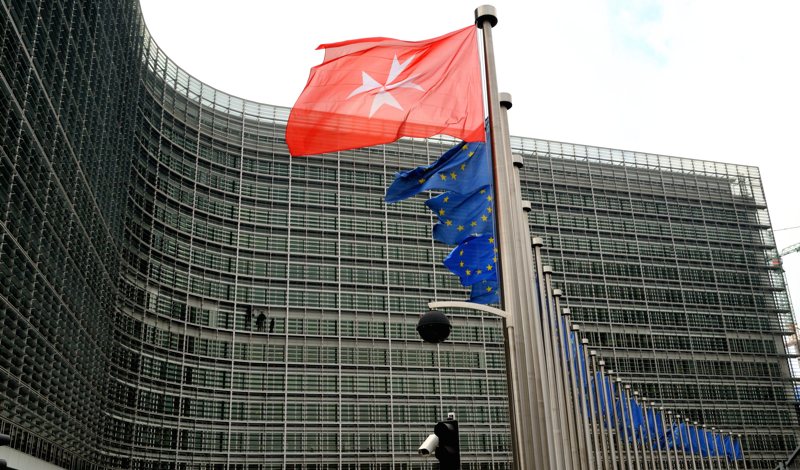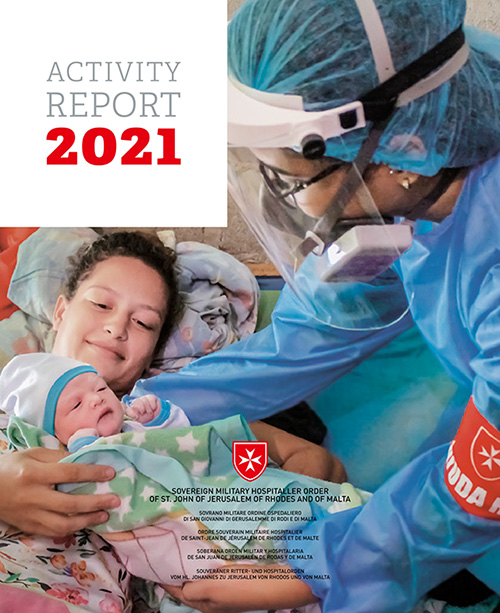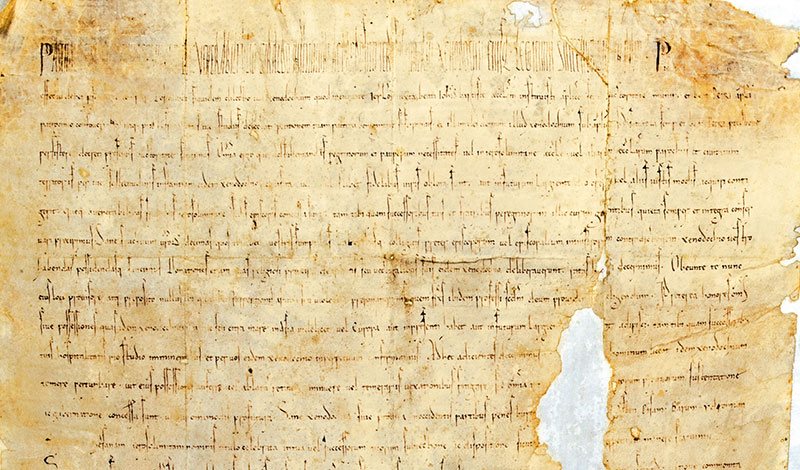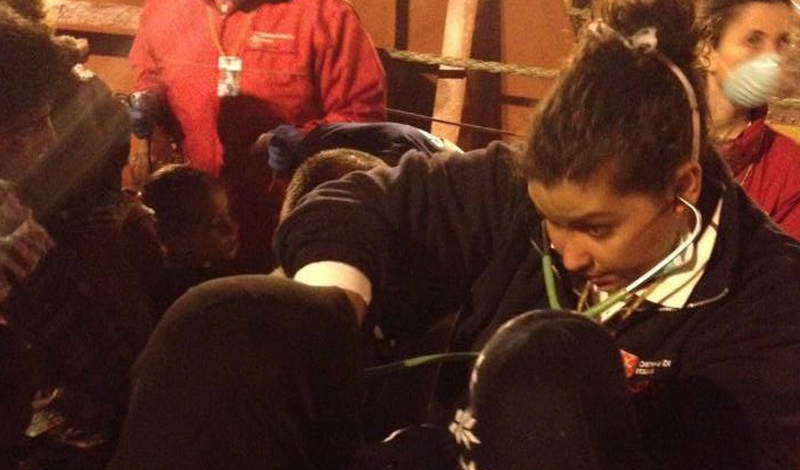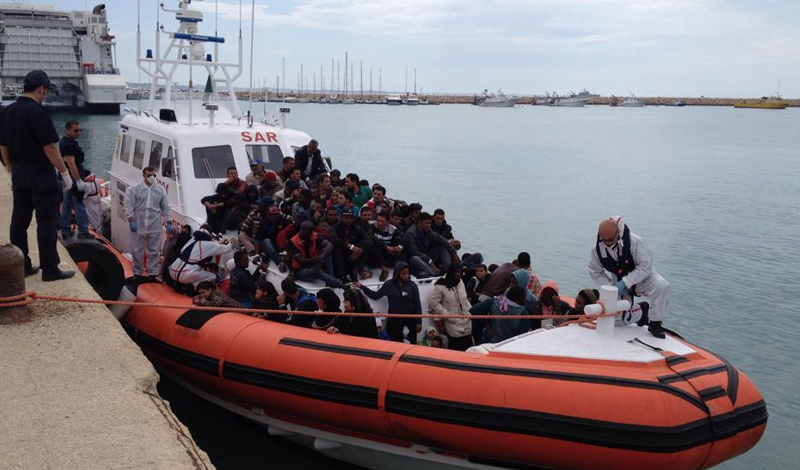A journey to Lampedusa recounts at first hand the work carried out by the Order of Malta’s Italian Relief Corps’ volunteers
by Marianna Balfour
Giada, a young Order of Malta volunteer doctor from Sicily who is assisting the migrants on Lampedusa, has despair impressed on her arms. It’s a spring evening, dusk is falling; the air is cool on board the Cost Guards’ ATR 300 and we’re wearing long-sleeved jackets. We’re crouched in the patrol vessel used for rescuing the migrants’ boats to interview the volunteers who are present at the moment when fear turns into hope for those who find strong and expert arms at the end of a long and extenuating journey. And they desperately grasp those arms, using their last strength with a force they don’t realise they possess. The bruises on Giada Bellanca’s forearms are evidence of a human experience that the 33-year-old doctor will carry with her for the rest of her life.
Working alongside Giada there’s also Maria Grazia Mazza, another young doctor from the Order of Malta’s Italian Relief Corps, who decided to put aside her instruments and white coat and devote her time to helping those who are fleeing “from fear and despair”.
“Yours are the first eyes they meet, and they’re looking for salvation in them,” the young Sicilian doctor tells us. It is she, together with the nurses, organizers and rescuers, who is telling us about their daily work of saving people in the middle of the night, of games improvised with rubber gloves to distract a child who has faced death, of rescued Syrian doctors who lend a hand to the medical team on the boats, expertly wielding bandages and tourniquets.
It’s difficult to believe that the tragedy of the century is being played out here, among the turquoise waves and cavorting dolphins. Twenty thousand corpses lie on the bottom of this marvellous sea but the real risk of drowning does not stop the crossings. On the contrary, the latest official figures tell us that there was an 800 percent increase in migrant arrivals during the first months of 2014, caused by the war in Syria and living conditions in Sub Saharan Africa. The latest Mare Nostrum operation occurred a few hours ago when 17 boats and 2500 migrants were rescued.
Faced with this emergency the Order of Malta’s Italian Relief Corps continues to work tirelessly. There are volunteers wearing the octagonal cross, a doctor and a nurse, who give emergency aid to migrants on board all the Coastguards’ and Customs’ patrol boats engaged in rescue operations. The work of the Order’s volunteers changed after the Mare Nostrum operation was launched and the Order’s doctors have now been also working on board the military ships deployed off the Sicilian coast since last March. A sign of the profitable synergy on the ground between institutions and the Order’s Relief Corps, using its considerable medical and human experience to back up the Italian Coastguards and Customs Police.
“Our fundamental role is to sustain: besides medical assistance we also offer also psychological help,” explains Mauro Casinghini, National Director of the Relief Corps, by now is a familiar face on Lampedusa.
“Assisting the migrants means giving a sense to their lives. It means perceiving their hopes, their anguish and also seeing on their faces what they have experienced, what they will have to experience in the future. It is something very particular, all the more so when you think of what they have gone through in their countries of origin and during their journeys which start hundreds and hundreds of kilometres south of Libya and pass through every type of adversity and even violence,” Casinghini continues.
The Order of Malta’s volunteers have been on the Sicilian island since 2008 and have assisted some 5000 people, including children and pregnant women. Particularly significant was the rescue work for the shipwreck that occurred on 3 October 2013 a few miles from the coasts of Lampedusa, when the psychologists joined the doctors to aid both survivors and rescuers, as the scenes they have witnessed have left an indelible mark.
